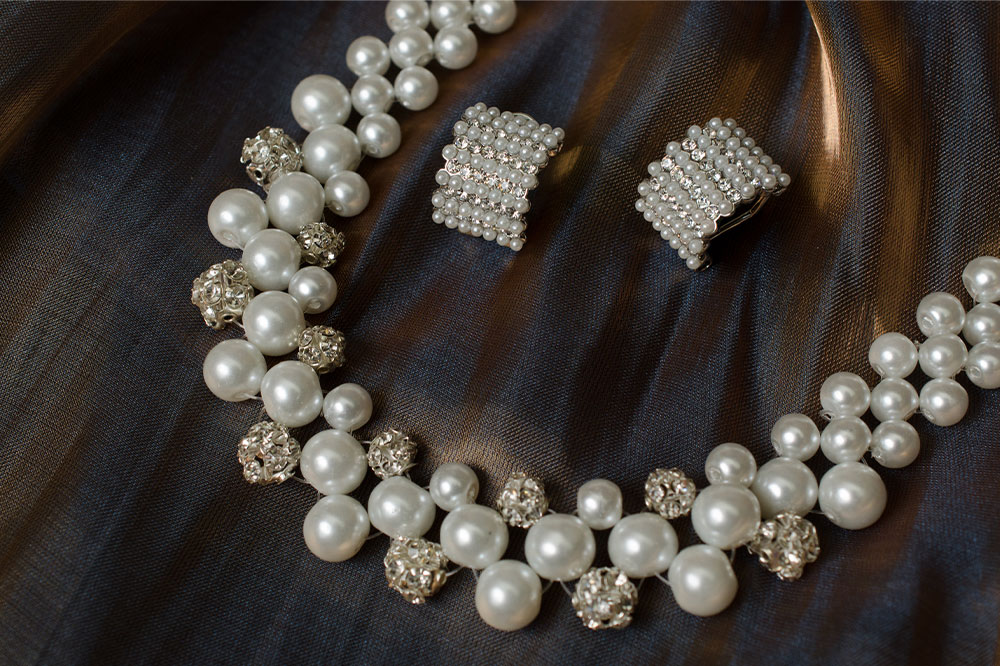5 trendy jewelry types for women

“Fashion fades, style is eternal”. And true to this statement by Yves Saint Laurent, there are some classic accessory styles that accentuate your overall look in the simplest way possible. Here are the top picks in trending jewelry that go well with all types of outfits. The designs and patterns of these jewelry pieces are the perfect mix of elegance and simplicity and are a preferred choice among several women globally.
Hoop earrings
Hoop earrings were first introduced in 2500 B.C.E and have been in fashion ever since. These accessories were in style centuries ago, popularly worn by women belonging to ancient Greek, Roman, Egyptian, and Asian civilizations. The circular loop design signifies infinity and wholeness and is popularly regarded as a symbol of strength and empowerment in fashion.
Over the years, the materials used in the making have surely evolved, but the accessory has never gone out of style. Perfect for both casual wear and smart formals, you can try out different sizes of hoop earrings. Plain designs work well with bold-colored outfits, but you can also wear them with simple patterned outfits. Moreover, you can pair studded hoop earrings with prints that match the design. The oversized hoop earring is still a popular favorite among those who love to accessorize with minimalistic designs.
Necklaces and pendants
Necklace and pendant sets are a complete accessory to wear with casuals and formals. This is because the versatile design and clever use of materials make every necklace stand out as a screaming fashion statement! From simple gold and silver flexible chains with a small pendant to complete gemstone-studded patterns, the variety of necklace designs is simply stunning and unique. Even symbolically, necklaces are worn as a strong sign of wealth, power, prestige, and status in society. Further, it is believed that the more complex and valuable the pattern and gemstones, the more valued a person’s status will be. However, over the years, minimalistic designs and DIY fashion ideas have made necklaces a more affordable and popular choice of accessory.
You can buy necklaces from a roadside flea market to simply accessorize your outfit or visit a fancy store to shop for a one-of-a-kind set made with priceless gems and rare earth materials. The variety of necklaces and pendants is endless, so you can find the perfect pieces for every occasion. However, something that goes well with most ensembles is delicate precious metal jewelry that combines timeless elegance with quality craftsmanship. Kay Jewelry, for instance, is known for such collections. It offers pieces made with 10 to 18K gold, sterling silver, and platinum, making the necklaces worth considering.
Bracelets
When you wear an elegant dress or an outfit that needs a little more panache to complete the look, it’s always safe to accessorize with bracelets. Bracelet designs are not only eye-popping but also quite elegant and chic to wear for formal events as well. In fact, bracelets are regarded as a symbol of relationship, each with its own unique significance be it for friends or family. Bracelets even represent known cultures and hold religious significance for many around the globe. Over the years, bracelets have evolved to be a popular accessory and they still hold significance for the wearer.
There is a wide variety of designs ranging from beaded bracelets that go well with casual outfits to even lucky charm bracelets that carry a deeper significance. Also, charm bracelets are a reminder of special occasions or even special people. Moreover, gemstone bracelets are quite popular, and you can find one made with precious stones that even correspond to your birth month. Irrespective of the type of bracelet you choose, the accessory goes well with almost every outfit, from casual jeans to elegant cocktail dresses.
Ear cuffs
Ear cuffs are a trending piece of jewelry that many people choose to wear regularly. Your earrings are a slightly larger accessory that may not go well with some types of outfits. But ear cuffs are smartly designed and remain quite minimalistic in terms of materials and patterns. Ear cuffs blend well because they are worn over the ear lobes, all the way up to the top of the ear. And you can mix and match designs by wearing multiple cuffs.
With this piece of versatile jewelry, you also avoid piercing the ear cartilage multiple times. The cuffs don’t even require pins or any type of hold to stay on as the design allows you to place them gently without any pain. You can shop for dainty styles made with common materials or go for a fancy look by buying premium gemstone ear cuffs designed for a specific occasion.
Classic watches
Even as the trend shifts towards the increasing use of smartwatches and wearables that can be synced with smartphones, many prefer the joy of flaunting classic watches with big dials. Most of these are dainty and visually appealing because of the use of precious stones and rare earth materials. Moreover, many brands have managed to come up with designs that work with both casual wear and smart formals minus all the unnecessary flair.
One thing that classic watch dials have in common is Roman numerals. It’s not a classic piece if it doesn’t have Roman numerals. Gold and silver remain the popular metals for the watch body and strap. Also, black and white are the most popular picks for the background of the watch dial with gold and silver Roman numeral imprinting. With classic watches, you can never go wrong as they are one of the most popular and impactful accessories to choose from.
Typically, fashion choices are largely influenced by trendsetters on social media. But when it comes to accessories, there is always the freedom of mixing and matching the classics to get a unique look. So, go ahead and try out some of the best picks in these categories and discover what type of accessory suits you the best.





